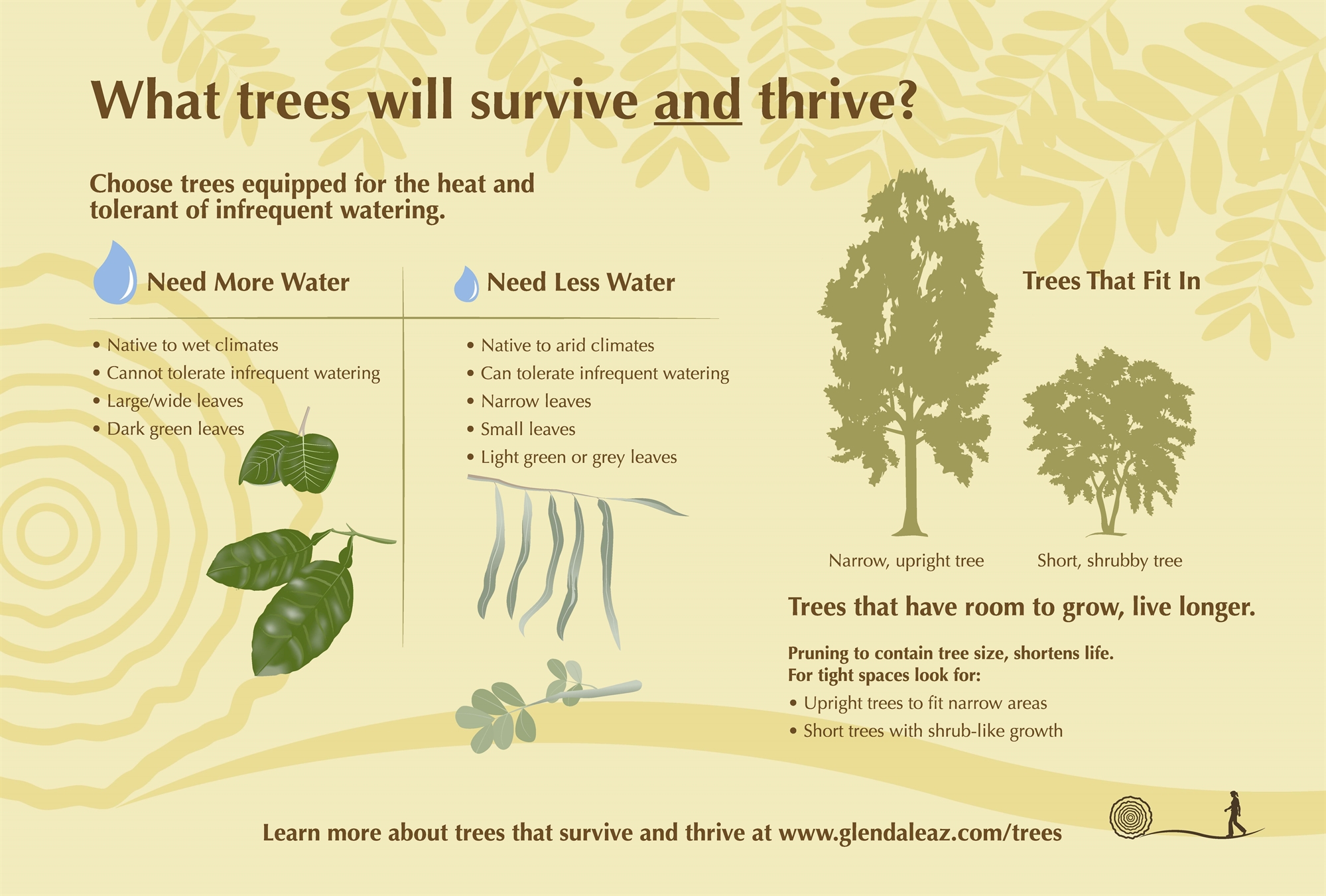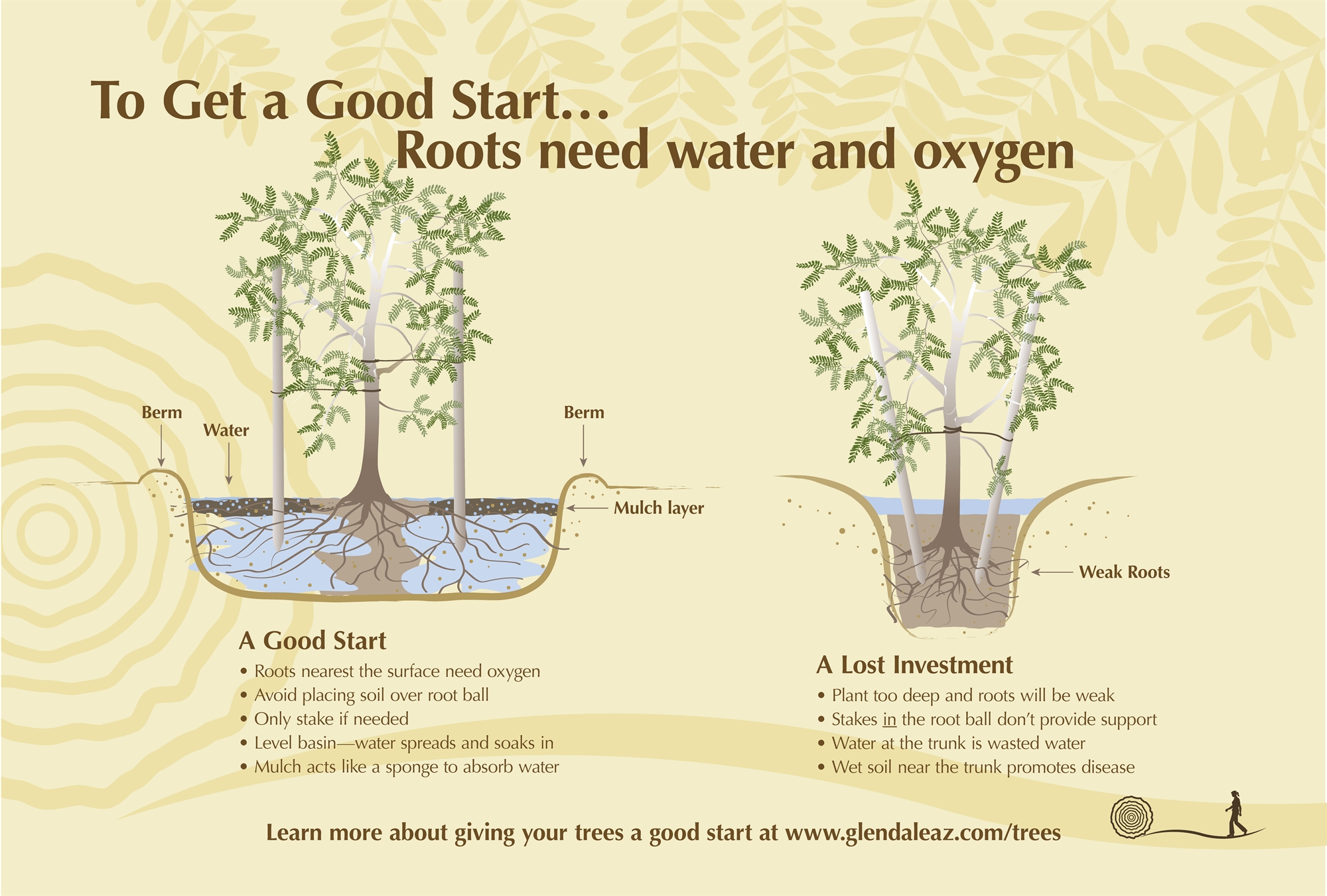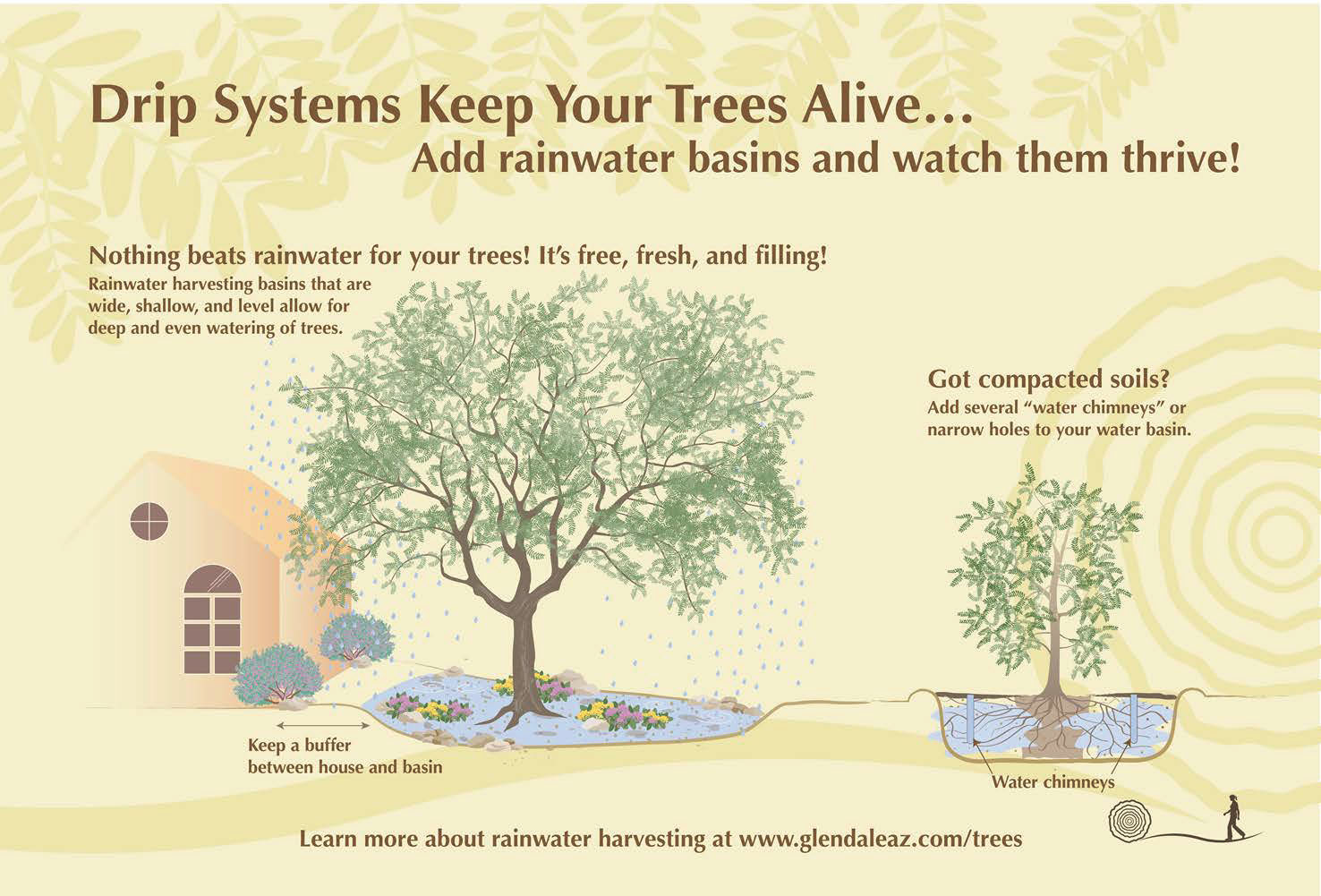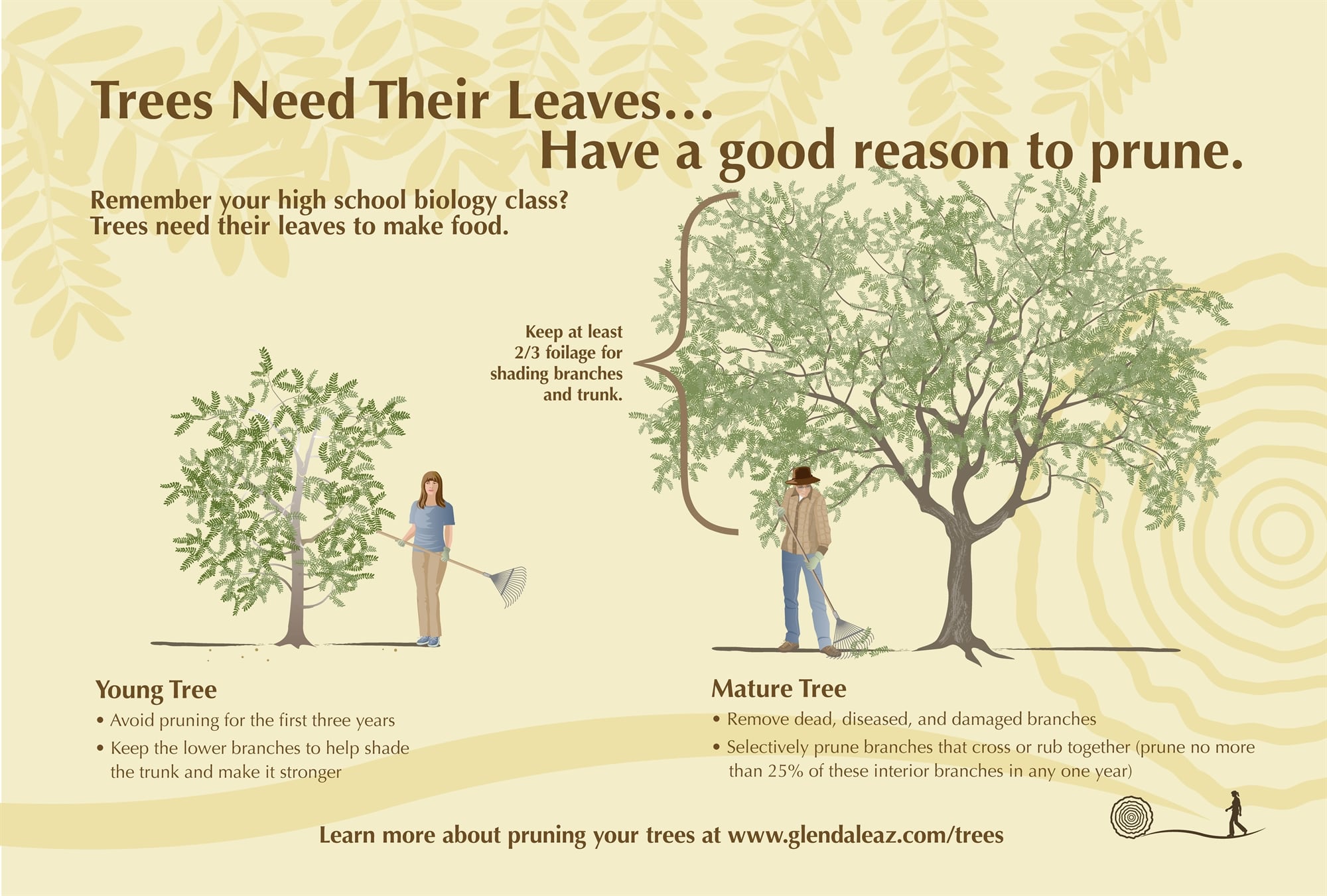The 10,000-square-foot Tree Trail is located at the Glendale Xeriscape Demonstration Garden. Funded by a Bureau of Reclamation water conservation grant, the Tree Trail was installed in 2011 to replace the outdated west area of the Demonstration Garden.
The Tree Trail provides examples of small and medium-size desert-adapted trees with signage illustrating proper tree care practices. The Trail demonstrates the latest in irrigation technologies and displays plants using rainwater harvesting strategies such as basin-style planting and a variety of permeable pavers.
Check out the following helpful tree care images, videos, and links below.
Tree Selection
 (PDF, 1MB) Trees provide a variety of beneficial services to people and the environment, but the type of tree and where the tree will grow are factors that must be considered for the tree’s success. Learn how to choose the right tree for the right place.
(PDF, 1MB) Trees provide a variety of beneficial services to people and the environment, but the type of tree and where the tree will grow are factors that must be considered for the tree’s success. Learn how to choose the right tree for the right place.
Tree Planting
 (PDF, 2MB) It is important for trees to get a good start in order to get the outcome you desire in a healthy tree. Don't know the first steps to plant a tree? Don't worry. Learn how to plant a tree correctly.
(PDF, 2MB) It is important for trees to get a good start in order to get the outcome you desire in a healthy tree. Don't know the first steps to plant a tree? Don't worry. Learn how to plant a tree correctly.
Tree Watering
 (PDF, 2MB) It is vital for trees to receive the adequate amount of water it needs at each stage of its growth. Proper irrigation practices will help your tree grow healthy and protect your investment. Learn more about efficiently watering your trees.
(PDF, 2MB) It is vital for trees to receive the adequate amount of water it needs at each stage of its growth. Proper irrigation practices will help your tree grow healthy and protect your investment. Learn more about efficiently watering your trees.
Harvesting Rainwater
 (PDF, 139KB) In an arid environment, it is becoming increasingly more important to use rainwater to save water, improve stormwater quality, and improve tree health. Learn how to use rainwater in your landscape.
(PDF, 139KB) In an arid environment, it is becoming increasingly more important to use rainwater to save water, improve stormwater quality, and improve tree health. Learn how to use rainwater in your landscape.
Tree Pruning
 (PDF, 7MB) Too much pruning, and improper pruning, can compromise the health of your tree and create a potential hazard. Take the time to learn how and when to prune.
(PDF, 7MB) Too much pruning, and improper pruning, can compromise the health of your tree and create a potential hazard. Take the time to learn how and when to prune.